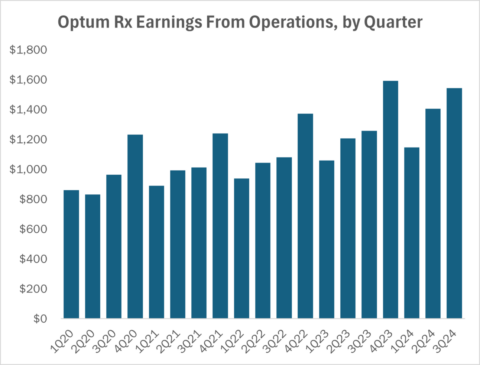Everyone loves talking about obesity medicines, so let’s talk about obesity medicine.
By taking Friday off, I didn’t get a chance to highlight the news that CMS will — officially — allow for the reimbursement of obesity medicines for non-obesity indications. In the short term, this means Wegovy for cardiac risk factors in patients with obesity, per the approval earlier this month.
This is technically news, though it doesn’t seem like it’s much of a surprise. The big question is what it will mean for coverage.
STAT has a pretty good answer, which is “um, maybe not that much.” While Medicare plans can cover obesity meds, they’re not required to. And given concerns about use skyrocketing, STAT suggests that plans may be very cautious about expanding into GLP-1 medicines. Even if obesity meds do get coverage, STAT suggests that mammoth cost-sharing and PITA levels of utilization management may be the standard.
In short, this could be a great example of the difference between “coverage” and “access.”
But Medicare coverage is nonetheless an important milestone, and the fight over making clearly cost-effective medicines more widely available is only going to intensify.
***
While we’re on the subject: everyone seems to be talking about this compelling (but probably wrong) piece by Gina Kolata in the New York Times. It’s classic Kolata: eminently readable, creative in its language (rebranding chronic disease treatments as “forever drugs”), and overblown in its conclusions.
Kolata’s thesis is that adherence to obesity meds — unlikely pretty much every other class of drug — is high, underscoring the efficacy and uniquely visible impact of treatment. Kolata’s evidence is mostly anecdotal, which leads to an issue, as pointed out by regulatory expert Deb Williams on LinkedIn: more comprehensive looks at the topic have come to a different conclusion.
In some ways, the obesity focus is unfortunate. The bones of the story — the idea that adherence is an enormous public health challenge — is incredibly compelling.
This is a fun survey: nearly half of all payers don’t think that CMS is going to be able to generate bigger savings through the IRA than the PBMs already do, according to Magnolia Market Access data amplified by Formulary Watch.
J&J’s first response to the lawsuit accusing it of doing a lousy job of selecting drug benefits for employees is out, suggesting that the employee that sued the company doesn’t have standing and that J&J’s drug benefit isn’t that bad when seen in totality. I have no standing to comment on the legal arguments (lawyer Bill Sarraille said on LinkedIn that he thinks the J&J position holds water), but the more attention this case gets, win or lose, the more educated everyone will be about benefit design.
I’m still waiting for Lilly’s list- and net-price numbers, but they did drop some “Year in Review” content, including “Sustainability Highlights” that flagged the amount the company invested in R&D, its $35 insulin program, and the $4+ billion in free medicine the company distributed.
This great Journal of Medical Economics study led the newsletter last week. It was a great piece of work, documenting how tilted cardiovascular innovation is toward post-marketing research and secondary indications. And while I’m disappointed no media outlet covered it, I’m happy to see that the piece is nonetheless getting some attention, including this summary on PhRMA’s blog.
I feel like we’re real close to having decisions in a bunch of IRA cases. The Merck one seems most overdue, and the Chamber suit would have to be getting close. The four cases all being heard in New Jersey might be a little further behind, but those would seem to be all over but the shouting. Trailing the field might be the BI case, which was just reassigned from a Trump appointee to an Obama-nominated jurist: Judge Michael P. Shea.
If this email was forwarded to you, and you’d like to become a reader, click here to see back issues of Cost Curve and subscribe to the newsletter.





